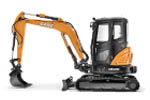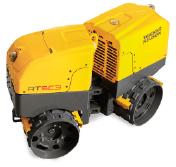Your excavators are some of the most important machines in your fleet. Equipping them with the right excavator attachments enables you to tackle a diverse range of tasks on every project, including excavation, demolition, material handling, mulching, grading, compacting, and more. However, your success in completing all these different applications depends on selecting the optimal attachment, tailored to your specific job and machine.
In this article, we share some important tips and best practices for choosing the best excavator attachments for your requirements.
Familiarize yourself with the most common excavator attachments
There is a huge range of attachments available to handle everything from digging to demolition to vegetation management to material handling. Here are several of the most commonly used options that can augment your equipment’s capabilities:
Excavator buckets—Serving as the cornerstone attachment, excavator buckets facilitate digging, material carrying, grading, leveling, and backfilling tasks. They come in various types, such as digging, rock, grading, ditch cleaning, trenching, and more.
Multiprocessors—Acting as formidable jaws, multiprocessors excel at cutting and breaking down tough materials encountered in demolition work.
Excavator grapples—These attachments enable you to grasp and position scrap, wood, brush, piping, and other materials, transforming your excavator into a versatile material handler.
Hydraulic breakers—Also known as hammers, hydraulic breakers effectively pulverize solid materials like concrete, rock, and steel, helping you dismantle structures in demolition projects.
Excavator shears—Ideal for cutting and shredding structural steel, rebar, scrap metals, and construction materials, excavator shears are must have tools on every demolition job.
Excavator thumbs—Thumb attachments provide operators with precise control for handling and moving debris, rocks, and loose materials.
Apart from these commonly used excavator attachments, there are a range of others, including plate compactors, pulverizers, trenchers, and more.
Consider your specifications
Whether operating hydraulic breakers, grapples, multiprocessors, excavator thumbs, or other attachments, all are powered by your equipment’s hydraulic circuit. While excavators are typically categorized as “high flow” or “standard flow,” these designations may vary between manufacturers. Generally, high flow circuits exceed 26 gallons per minute, whereas standard flow circuits provide around 22 gallons per minute. It’s essential to ensure that the excavator attachments you choose align with your hydraulic capabilities.
Ensure compatibility with your machine
Once you’ve determined the type of excavator attachments required and verified its hydraulic needs, the next step is to confirm its compatibility with your machine’s mounting system. While most options feature a universal mount, variations may exist based on your specific make and model.
Conduct a trial run
Before making a purchase, we recommend scheduling a demo of the excavator attachment. Allowing your operators to test it out firsthand will reveal insights into ease of installation, maneuverability, and performance, helping you make an informed decision.
Consult our team
Given the multitude of excavator attachments available, we suggest consulting with our equipment experts before making a purchase. Share details about your typical projects and the make and model of your machine, and our team will assist you in determining the most suitable size and type of attachments for your needs.
Meet with our team to find the best excavator attachment for you.






































